Thallophyta: Algae
Algae are most primitive of plants. They are photoautotrophs with an less differentiated body. They have a very simple thalloid structure. Their size and form can vary greatly. They can be colonial (eg, Volvox) or filamentous (Ulothrix, Spirogyra etc). Others can be very large as seaweeds (eg. Kelps).
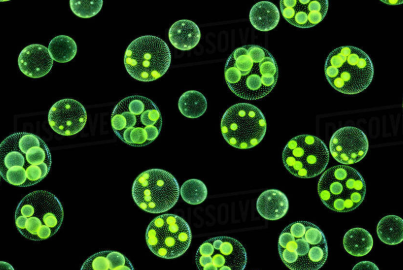
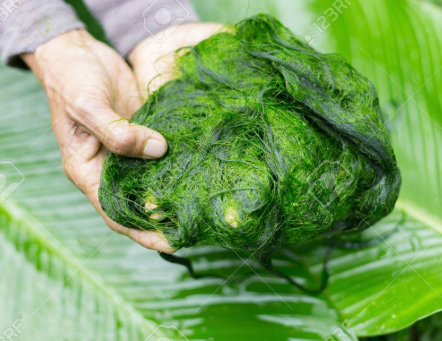
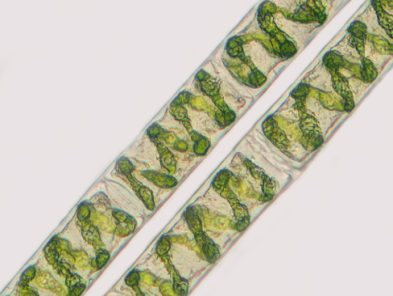
Volvox Spirogyra
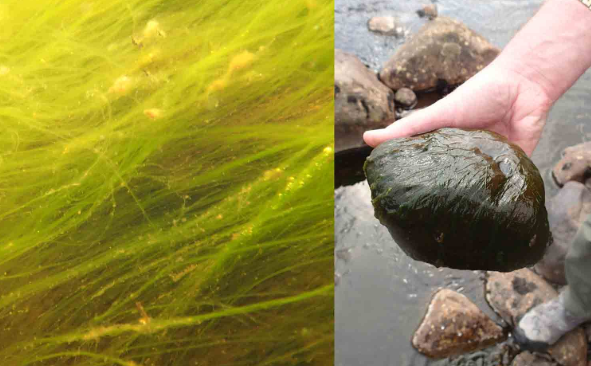
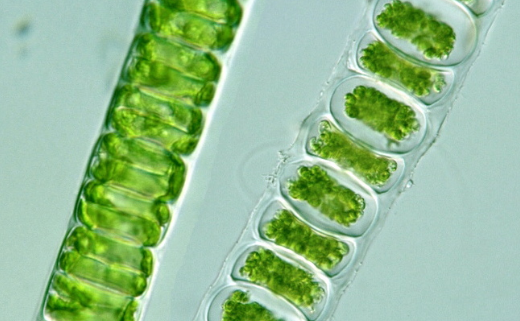
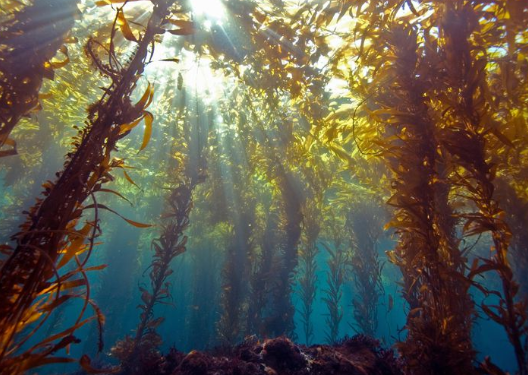
Ulothrix Kelps
Habitat
Algae are mostly aquatic (both marine and freshwater). They are also found in other moist materials such as stones, soils and wood. Some algae are found in symbiotic – associations with fungi (lichen) or animals (eg. sloth bear).
Reproduction
Reproduction in algae occurs by vegetative, asexual and sexual methods.
1. Vegetative reproduction: The organism divides itself into different fragments. Each fragment develops into a new organism.

Fragmentation in Spirogyra
2. Asexual reproduction: by production of spores.
Algae produce different types of spores. Zoospores are the most common of them. The spores are flagellated, and thus motile. They germinate to form new individuals.
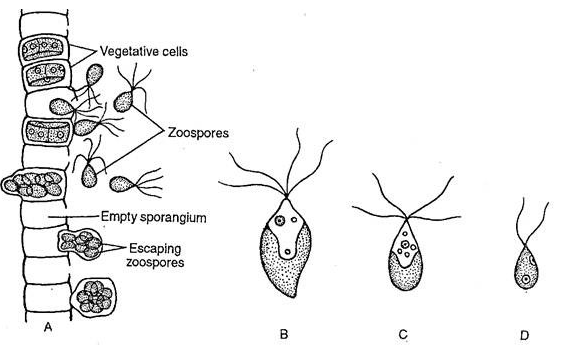

3. Sexual reproduction: By fusion of gametes.
Fusion of gametes of same size (similar) is known as Isogamous. These gametes can be flagellated (motile) as in Ulothrix, or non- flagellated (non–motile) as in Spirogyra.
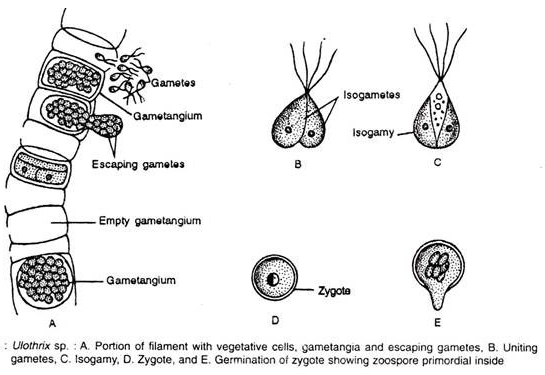
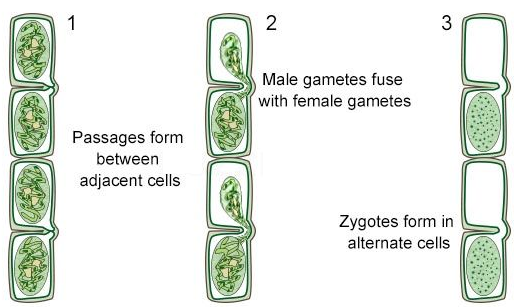
Isogamy in Ulothrix Isogamy in Spirogyra
Fusion of dissimilar gametes is known as Anisogamous (eg Eudorina)
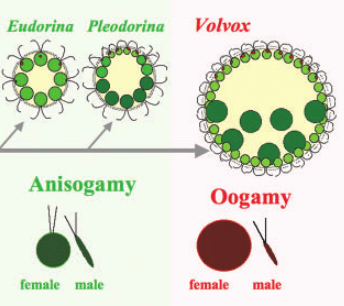
Fusion of a large, non-motile female gamete (egg) and a small motile male gamete (sperm) is known as Oogamous. Eg. Volvox, Fucus.
Economic importance
- Fixators of CO2: Algae are one of the major producers in an ecosystem. They are responsible for fixing more than 50% of the world’s total CO2. In oceans, since plants are absent, algae form the base of food chains, and support the whole marine life.
- Supply of Oxygen: Algae produces oxygen as the by-product of photosynthesis. Nearly 30 to 50
- Used as food: Many species of algae are used as food.
- Porphyra (red algae) is a major commercial food item in Japan.
- Laminaria (brown algae) is eaten with meat or fish, and in soups.
- Chlorella (microscopic algae) contains 53 – 65% protein content. It is used as food for space travelers, and aslso as food supplement in Japan, Taiwan and Malaysia.
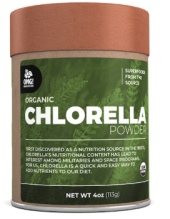
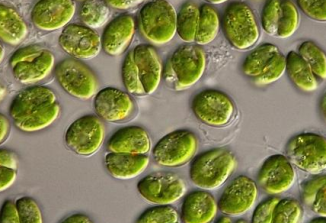
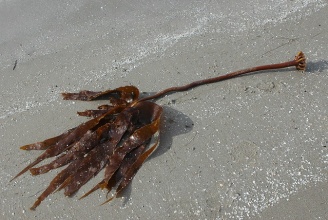
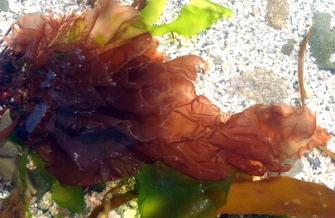
Chlorella Laminaria Porphyra
In commercial industry:
- Algin: Algin is a hydrocolloid (water holding substance) derived from different species of brown algae (Laminaria, Sargassum, Fucus, Macrocystis). Due to its water absorbing quality, it is widely used in making gels, emulsifiers, paints, and as stabilizer in production of rubber latex. It is also used in medicine field for the preparation of drugs and antibiotics.
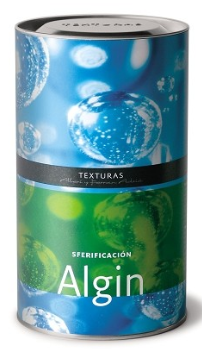
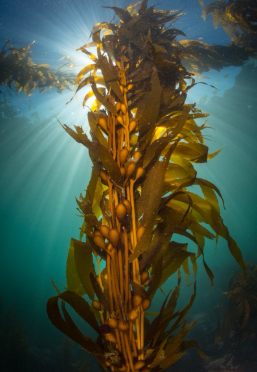
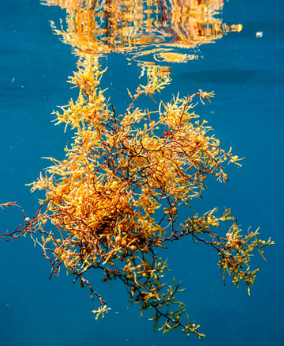
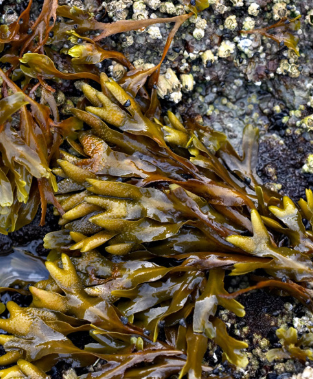
Laminaria Sargassum Fucus
- Agar: Agar is a dried, gelatinous substance extracted from red algae (Gelidium, Gracillaria). It is used in the preparation of ice-creams and jellys. In medicine, it is most essentially used in the preparation of culture media for bacteria and fungi. It is also used as a laxative for medical uses.
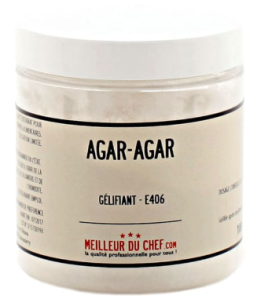
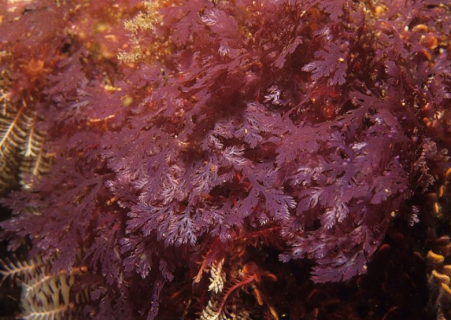
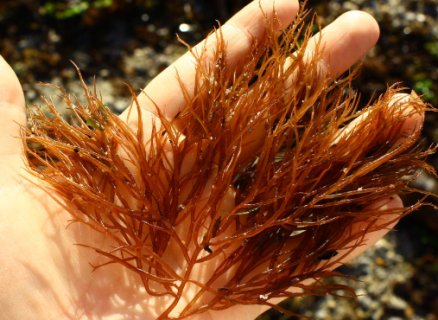
\ Gelidium Gracillaria